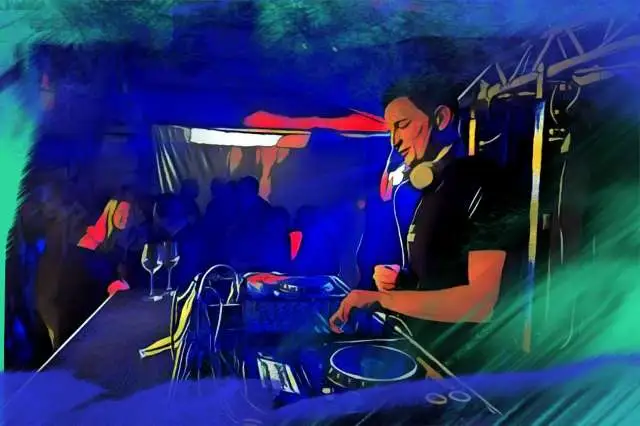Electronic music production is a fine art in many ways. That being said, you can't make a track sound great without learning how to mix electronic dance music properly. The genre has many key characteristics that give EDM its cardinal sound and without understanding these aspects, it's challenging to create a professional sounding mix.
We'll decode everything you need to know about mixing electronic dance music below so that you can craft bangers from home. Let's dive into it!
What Defines EDM?
EDM or electronic dance music is a genre that continues to evolve today. In its simplest form, EDM refers to any electronic music that relies more on samples and synthesized virtual instruments than live recordings.
The early days of electronic music can be traced back to genres like Disco or Detroit Techno. The introduction of more electronic-based instruments like drum machines, mass-produced synths, and samplers. Take a listen to this techno classic:
As you can see, the beginnings of techno music as we know it sound a lot different than what we might consider "techno" today. Granted, techno is just a sub-genre of electronic music, but it's true that digital sound continues to evolve and develop as our musical tastes change.
There are a few things that define the genre today which are essential to keep in mind while recording, producing, and mixing EDM:
A heavy bass.
One of the most consistent characteristics of electronic music production across the board is that you'll typically find a strong sub-bass and bass track. The sub-bass is usually cut in mono since it's designed to shine on club speakers, which model this sonic experience. EDM music bass tracks run so deep that you'll sometimes feel the lower sounds on the frequency spectrum within your chest.
Punchy drums.
While EDM songs may use a drum loop or two, the percussion parts are anything but weak. The most vital sonic parts in electronic songs are often the drums and bass. This is because these rhythmic sections help drive the characteristically "danceable" sounds the genre is known for. You'll often find classic drum patterns like "4 on the floor," which emphasize the offbeats of 2 and 4.
A "drop."
A lot of the magic of EDM music is the tension and release created through the presence of a drop. Talented producers know how to create and carry energy all throughout a track, which is one of the main reasons listeners return to the genre time and time again. To create this payoff or climax, EDM music utilizes plenty of automation, dynamic processing, and filters to weave elements in and out of a well-balanced mix.
Typically at a steady and higher BPM.
In order to increase danceability, EDM music is usually set at a higher BPM or tempo. The BPM of electronic music is usually set at 120 or higher, though there are exceptions to the rule. EDM tracks usually stay at a steady rhythm throughout , though EDM producers may build tension following up to the chorus by adding additional sounds throughout the mix to further subdivide a drum section.
They are designed for "dance" settings.
EDM music emerged from the club scene, so it's no surprise that it's danceable by design. While there are many different types of EDM music, you'll be able to bop to just about any electronic sound, whether the featured vocals are happy or sad. Take a look at how EDM has changed over the years:
Mixing EDM Starts With The Recording Process
It's true that EDM doesn't have as many live recorded elements as other genres. However, that means that features that you do record (typically vocals) stand out that much more. Like any other genre, there's no denying that making music that sounds great starts with attention to detail in the recording stage. Here are just a few basic principles to keep in mind, but you can check out our full guide for a more comprehensive overview.
Check your recordings before moving forward.
I can't tell you how many times a song has been doomed from the start due to a poor recording. It's important to check your recordings and sound design before moving ahead since the recording stage is foundational to the mixing and mastering process. Check the recordings on your studio monitors, headphones, and laptop speakers. If you're not sure if it sounds good, record the vocal again.
Select samples that work well together.
Remember that every sample you select should be thought of as a part of a whole. For instance, you'll want to select a kick drum that works well with your bass. You might find some samples that sound good on their own, but if they don't work within the context of the rest of your mix, it's not worth the hassle.
Find the right microphone for your vocalist.
Recording vocals is an art in itself. In EDM, there aren't many recorded elements, which makes a solid vocal recording that much more important. Vocals will naturally stand out amongst the rest of your song, so you'll want to make sure they're highlighted for a good reason.
Great vocal recordings start with selecting the right microphone for your vocalist. Generally speaking, pop or electronic vocal sounds utilize a condenser microphone. These delicate mics usually have a brighter sound, sometimes boosting higher frequencies. Harsher vocals might take to a more stable dynamic microphone; others might work well with a delicate yet consistent ribbon microphone.
Whichever microphone you choose, be sure to take the proximity effect into account. This principle states that the closer a vocalist is positioned towards the microphone, the darker the vocal will sound. It will also sound louder. You'll want to be careful since EDM depends on having clean bass frequencies.
Work with your vocalist to adjust your audio interface to the optimal recording level for a clean, consistent vocal. Your vocalist may prefer to work with a dry signal or on a wet track but be sure to check the dry vocal before moving ahead with your mix.
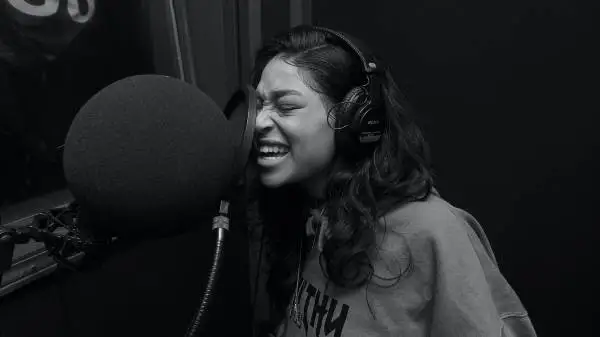
Perfect Your Production Before Moving On To The Mix
As any mastering engineer will tell you, a great master starts with a potent mix. Do you want to know what a strong mix starts with? A properly produced track. Before even thinking about mixing your music, start with perfecting your production . Here are a few basic fundamentals to keep in mind before moving onto the mixing stage.
Keep your tracks organized and symbiotic.
You may have lots of tracks, but only a few elements should stand out in your mix. When producing, ask yourself if each sound you add is genuinely adding to the overall mix. If it isn't, it's time to cut it out. New producers may have trouble discarding sounds they invested a lot of time into, but experienced mixing engineers and producers know that this a just another standard part of the process.
While EDM projects tend to have a greater amount of tracks overall than other genres of music, you'll notice that many of your layers still serve to boost the depth of a handful of key parts. You might have over a hundred tracks in your session, but most may make up parts of the main melody, drums, or bass section. One of the most important productions and mixing tips is that each sonic element should service the completed sound of the full mix.
It's all about keeping the energy.
Since EDM music is designed to be danceable, keeping the energy throughout the track is essential. While you'll want to create a consistent vibe throughout, you'll still want to keep your listener hooked by keeping your tunes engaging.
This could be switching up the drum pattern every couple of bars, using automation, or building tension for your big "drop." Whatever it may be, make sure you aren't being lazy with your production. Even if it's subtle, making little changes throughout your song can make a huge difference for your complete project.
Use your favorite tracks as inspiration.
There's nothing wrong with standing on the shoulders of giants, so to speak, to inform your next creative decision. Reference tracks aren't just great for mixing. They're also incredibly helpful throughout the writing and production stage. For instance, you can figure out the structure of your song by modeling it after one of your favorite EDM tracks.
You can also notice how the dynamics shift throughout a track and apply it to your own project. While you never want to copy an artist's work, using it as rough inspiration can make it a lot easier to make informed creative decisions while you're still figuring out your original sound.
Focus on the drop.
EDM music isn't the same without a strong drop. The "drop" usually refers to the chorus section of an electronic track that may or may not feature vocals. In order to produce a strong drop, try to build tension in the pre-chorus and verse .
You can create dynamic contrast between your chorus and verse sections by introducing volume changes, utilizing parallel processing, or trying out a new sonic element in the chorus section. Build up is paramount in EDM music, so make sure you give the drop the attention it deserves.
How To Mix EDM
Without further ado, here is our comprehensive guide on how to mix EDM. Keep in mind that there isn't one right way to mix music, so one mixing engineer has to have a different sound design strategy from another.
This guide should merely serve as a blueprint for building out your own tracks within the EDM space, but don't let these loose guidelines limit your creativity.
- Find a suitable reference track.
- Start with the faders.
- Create a clean and present low end.
- EQ out what you don't need.
- Work on the relationship between your drums and bass.
- Stack the layers.
- Create contrast with dynamics and stereo imaging.
- Compression is your best friend.
- Use FX and silence to your advantage.
- Test your mix in multiple environments.
- Check your mix after taking a break.
- Create multiple mixes if needed.
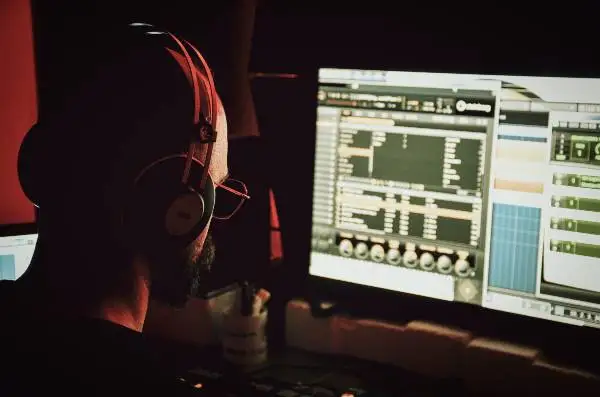
Find a suitable reference track.
New producers often neglect to find a suitable reference track for their mixes. Reference tracks are important across genres since they give us aural cues on how certain sounds should be balanced within a mix. Whether you're using one or many reference tracks, it's wise to pull these audio files directly into your mix so that you can hear them properly through your DAW .
Listen to your reference track to help answer any questions you may have throughout your mix. Not sure if your kick is too loud against the bass frequencies? Can't tell if the vocals need to be more forward in a mix? Check your reference(s).
Even the most professional mixing engineers utilize this technique to produce the clearest mix possible . Cross-check your mixes with some of your favorite tunes, and you'll start to see the best way to quickly improve your tunes.
Start with the faders.
A good mix begins with a good balance. That means that one of your most powerful tools is volume alone. This is why so many mixing engineers start with altering volume or gain staging before starting with any other element in the track.
You'd be surprised how different your mix can sound by experimenting with volume changes alone. Generally speaking, the sonic elements you want to highlight will be louder than other sounds within the mix. However, you don't want your mix peaking much past -6dB. This is because you want to give your mastering engineer enough headroom to properly compress the final mix.
In many cases, you might have 1 or 2 sonic elements that stand out amongst the rest of the sonic landscape. Keep in mind that high frequencies can be easier to hear so they might not need as much of a push as lower or mid-range sounds. Make sure you're mixing without any plugins on the master channel so that you're receiving an accurate depiction of your track.
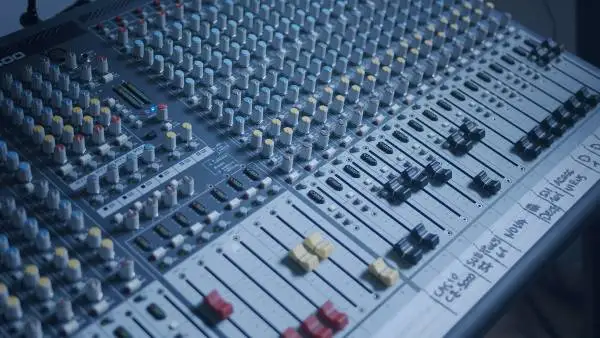
Create a clean and present low end.
In EDM music especially, your lower frequencies need to shine. Therefore, it's common practice to "split your bass" so to speak. In this process, you create your bass with two or more different tracks. The lowest track, usually somewhere below 100 Hz, uses a pure sine wave or saw wave while the bass above is cut with a high pass filter under 100 Hz.
This way, your sub frequencies are super clean, which helps keep your low end tight and impactful. Plus, club systems play out these ultra-low frequencies in mono anyway, so there's no need to select a sound to extend across the stereo field.
EQ out what you don't need.
Many producers focus so much on adding new sounds to a mix that they forget the importance of taking out unnecessary parts. Once you've eliminated out all unnecessary tracks, you might need to cut frequencies to make room for your featured parts, like the drums or bass section.
For instance, you might use a high pass filter like this one in Ableton Live to cut out low-end frequencies in tracks that may not need it, like vocal or high hats:
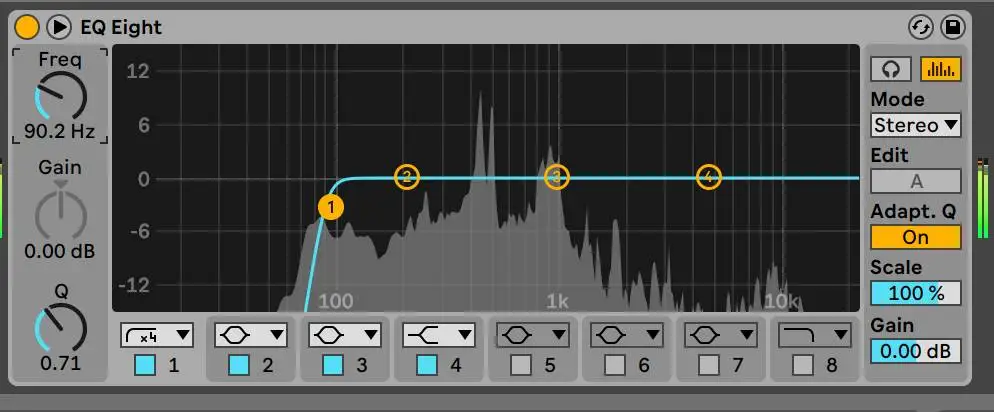
Work on the relationship between your drums and bass.
The drums, particularly the kick drum, are one of the most driving forces in an EDM track. Oftentimes, the bass track will be side-chained to the kick drum and or snare in EDM music. Sidechain compression ducks or compresses a sound in relation to another. So, whenever the kick is present, the bass is kicked down to help make space for the kick, which occupies a similar frequency space.
Sidechain compression isn't the only way to work on this coveted relationship, although. Utilizing high pass filters to tighten up your low end is also a great way to create space for your drums and bass. Just keep in mind that these two sonic elements are vital to creating a groove, so they should be one of your top sonic priorities.
Stack the layers.
All the elements of your song should work in tandem to create a clear, full mix. A couple of sounds may make up the body of a single, sonic idea. For instance, your main synth line may be comprised of multiple synths, each occupying a different section of the frequency spectrum. When in doubt, use a spectrum analyzer to see what areas of the mix might need some additional assistance. Create cohesive layers to add depth to your mix rather than adding as many different parts that you can think of.
Create contrast with dynamics and stereo imaging.
EDM music utilizes plenty of volume automation and filtering to create a more dynamic listening experience. You can use tools as simple as volume automation to build contrast between the verse and chorus of a song.
Playing around with the panning placement of different sonic elements can also help your song feel wider. In any case, it's essential to create contrast: You don't want your song to feel very forward or super-wide all throughout the track. It might make sense to switch between the different sounds when moving from one section to another, like the verse and chorus.
If you're not sure how to keep things interesting, listen to some of your favorite songs. There are plenty of ways to create contrast and hold a listener's interest throughout a track while mixing. Think of your sounds as living, breathing compositions. Keeping a track dynamic will make it a lot more enjoyable to listen to, even if you're using the same chord progression , bass line, and drum sounds throughout.
Compression is your best friend.
You'll need to be careful not to over-compress your mix, but compression can often be the glue you need to pull individual parts together. Compression works by reducing the dynamic range between two sounds , or making the loudest sounds quieter, and bringing up the perceived volume of the lowest sounds.
EDM is known for using tons of compression throughout the mixing process, but overusing it can lead to a lifeless mix. One of the best ways to mitigate this is to employ parallel processing: This method blends the original dry signal with the processed, compressed signal. That way, you're getting some of the original sound's preserved dynamics while still enjoying some of the processed signal. This is also known as "New York compression."
Use FX and silence to your advantage.
Most producers know that FX is an important part of creating a build up in EDM tracks, but don't forget the importance of silence in your songs. Silence itself is an instrument.
EDM also utilizes a bunch of FX like risers and down-lifters to build excitement throughout a track. Think about the importance of white noise while mixing and mastering your electronic track.
Test your mix in multiple environments.
Testing your mix on different systems is important for any genre of music, but it's especially pertinent with bass-heavy genres like EDM. You'll want to create the best version of your mix within your own space, but it's key to test out your mix in multiple sound environments before fully committing to your final mix.
You should test your sound on studio monitors, car speakers, laptop speakers. Essentially, any playback devices you can find to check your track's true stereo image. Sound behaves differently in varied environments, so any mixing issues you experience across multiple playback environments should be revisited. It's particularly important to test out your mix with both stereo and mono outputs in order to mitigate the possibility of phase cancellation.
Check your mix after taking a break.
Sometimes, the best way to improve your mix is to let it rest. All engineers have to account for ear fatigue: Unfortunately, our ears naturally become accustomed to a certain sound after listening to it repeatedly. While you can generally trust your ears to guide you throughout the mixing process, you'll need to be mindful at the same time.
Before bouncing out your final mix, get a proper night's rest. Even the best engineers sometimes wake up to a surprisingly poor mix, so don't get discouraged. Get in the habit of giving your track some room to breathe before finalizing it. Sometimes, time is your greatest resource when it comes to processing a polished sound.
Create multiple mixes if needed.
Multiple mixes can be helpful for creating different sonic variations for your listeners. You should be creating a new session every time you mix anyway, in case you need to refer back to an earlier version of the song.
Also, don't be discouraged if you aren't satisfied with your first mix. Sometimes, even the best engineers need to create multiple mixes in order to produce the best possible version of the track. It's also not uncommon for mastering engineers to request a change in the mix.
Just like any other skill, mixing becomes easier with practice. You'll find that the more you mix, the more natural it becomes, so be sure to experiment with as many mix iterations as you please.
Hence, there isn't one right way to mix an EDM track. However, these general EDM mixing tips can serve as a solid foundation for perfecting your songs. At the end of the day, the best way to practice mixing an electronic track is to do it on a regular basis. Get out there and start mixing your own music!


